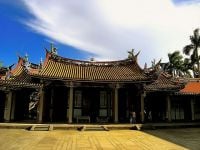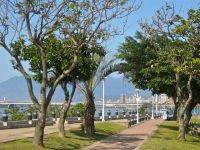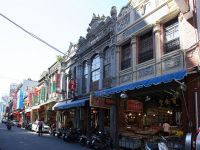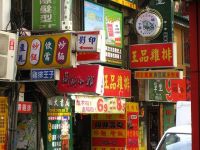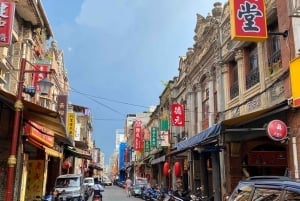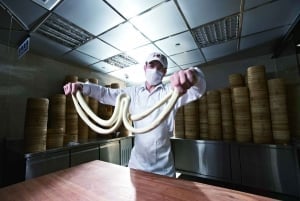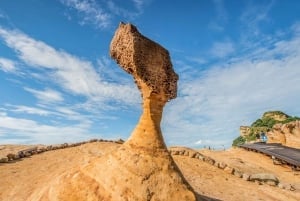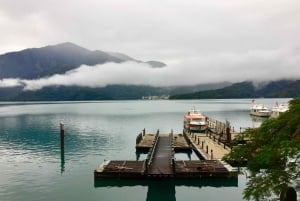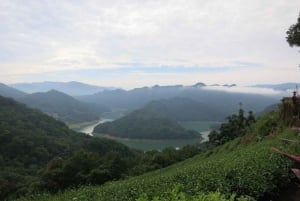Datong District
Datong District
One of Taipei's smallest districts, Datong is also one of its most important from a cultural and historical standpoint. Located at the far eastern end of the city's central belt line beside the Tamsui River, one of many waterways flowing through the metropolis, Datong is home to one of the first settlements of what would become Taipei City, an area called Dadaocheng. This is where you'll find the Dadaocheng Wharf, which thrived after the Second Opium War with Britain in the 19th century and made Dadaocheng Taipei's economic center.
Due to the area's prior importance as a place of international commerce, which focused mainly on the tea trade, there are many historic temples to be found around the district, such as the solemn grounds of the Confucius Temple, and the nearby Dalongtong Paoan Temple that dates back to the mid-18th century. The temple dedicated to Confucius (551–479 BC), the Chinese teacher and philosopher whose writings would come to govern many aspects of Chinese culture, thought, and daily life, is regarded as a place of quiet study and introspection, whereas Paoan Temple is more a place of traditional worship. To reach the temples, go to Yuanshan Station on the Tamsui Line (Red) of the MRT, walk out of the Kulun Street exit and go east down Jiquan Street until you reach Datong Street, where you'll find the Confucius Temple (No.275, Datong St.). Paoan Temple is located just a short distance to the north, at No. 61 Hami St. The walk from the MRT station to the temples takes about ten minutes.
As for the port, it fell into disuse in the early part of the 20th century after a railway line was built linking Taipei City to the sea port of Keelung, which became northern Taiwan's main link to the other major hubs of the region. Dadaocheng Wharf was transformed into a tourist promenade in the early oughts, with boat tours leaving from the docks not far from the entranceway, and performers such as Chinese Opera singers and dancers taking to the boardwalk at night. There are also cycling and walking paths along the riverbank, catering to the burgeoning bicycle culture that has sprung up in recent years in Taipei and around Taiwan. The paths offer a view across the river into New Taipei City, and the enclaves of Banciao, Sanchong, and Xinzhuang. The river's of Taipei were once the city's lifeblood, and the Datong District is the place to see how many Taipei residents once earned their daily bread.
Dihua Street
If you don't mind crowds, and happen to be in Taipei around the time of the Lunar New Year Holiday, then Dihua Street is a must-see. Every year, just prior to the new year celebrations, somewhere in the neighborhood of a million shoppers flock to the street to stock up on foods traditionally enjoyed during the venerated holiday that focuses on family and prosperity for the forthcoming annum. But it's not just about stocking up for the New Year's Eve party with family. There are also stores selling tea, Chinese medicinal herbs, and a number of fabric and clothing shops as well.
Taking a walk down Dihua Street is like stepping back in time, thanks to the area's preserved Japanese colonial-era architecture. Some parts of the street are even older, dating back as far as the 17th century, when the Dutch maintained a presence. The sights and smells of Dihua Street transport visitors to a different age, and although it's not all that far from the city center, it couldn't be further from the modern facade Taipei has developed.
To get to Dihua Street, go to Shuanglian Station on the MRT's Tamsui Line (Red). From there you can either hop on any of the number 9, 274, 641, or 704 buses and get off at the First Theater stop, or take a 20 minute walk west in the direction of the river. Dihua Street is between Nanjing West Road and Guisui Street.


